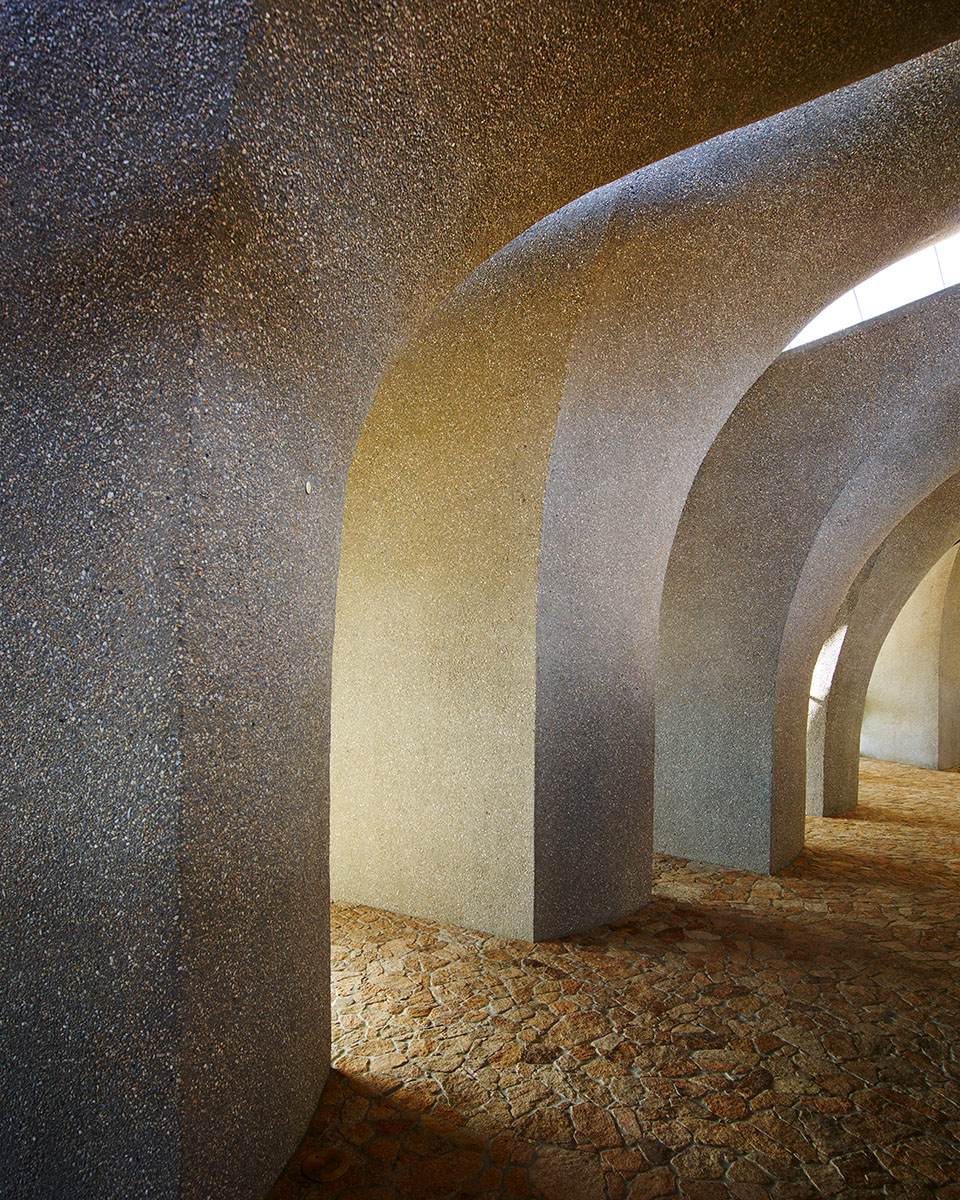Legendary photographer Richard Powers captures a masterpiece of organic modernism
Interview by Andrew Romano
Photography by Richard Powers

In 1986, organic architect Kendrick Bangs Kellogg of San Diego began to design his tour de force: a swooping, 5,000-square-foot spread of 26 cantilevered, petal-like concrete columns connected by virtually invisible panes of thick tempered glass and embedded in a five-story mound of massive boulders on the edge of California’s Joshua Tree National Park. More than three decades later, acclaimed architecture and interiors photographer Richard Powers shot the definitive images of Kellogg’s High Desert House. How he did it.

Were you aware of Kellogg or his High Desert House before you were asked to shoot it?
No. I must confess that although I've been shooting architecture for the last 25 years, I wouldn't say that I am an architecture aficionado. I approach it from an aesthetic point of view and leave my own personal taste at home.
I imagine that helps you bring a fresh perspective to your photography.
Exactly. I look at it from a purely photographic perspective. I just shoot it the way I see it, with fresh eyes. I don't study plans. If ever an architect sends me scouting pictures, I will only briefly look at them. I don't want to arrive on-site with any preconceptions of the shots that I'm going to get. I want to see it from my perspective and nobody else's.


How did this commission come about?
It came through an architecture writer in Los Angeles named Michael Webb who was working on a project about organic architecture. It was one of the houses that had caught his eye. He sent me a couple of picture and I went, "Yes, I'm on board. I want to shoot it."
What struck you about the house? Why was it such a quick yes?
It was mad. I love shooting houses that are non-conventional. Whenever I get to shoot a house like this, it's like a day off for me. You can just go crazy.
It was a one-day shoot. How did the day unfold?
I used my jet lag to arrive there early, as the sun was rising. I left Los Angeles at 2:00 or 3:00 in the morning. The first thing I did when I arrived, almost as I got out of the car, was to open this Sun Seeker app on my phone. I saw immediately where the sun was going to travel that day, then I mentally worked out, very quickly, how I was going to travel with the sun and make that work for me.


Sunlight seems especially essential at this house
Absolutely. It's a house that can be shot from all angles. There are some houses, when you arrive, you can immediately see that there's only an east or a south facade that's worth shooting. But, this house, in particular, was 360 degrees, and I shot it from every angle. So I usually start with the outside, on the east and the southeast. And in this case, I climbed up the mountain — up the boulders and rocks — to get a view from above, which was a really, really good angle. As the sun got a bit higher, I worked my way closer to the house to take advantage of some of the shadows. When it got too high, I went inside and worked out how I was going to travel through the house.



I'm used to windows or skylights, but there were just these beams of light that would shoot in


My goal was not only to pick up on the shapes and the light, but on certain waypoints as well
Were the interiors especially complicated to shoot? All those strange, high windows…
It was really tough. There are openings between the “leaves” or “petals” of the roof that were hard to predict. The way the sun comes through these gaps. I'm used to windows or skylights, but there were just these beams of light that would shoot in. Each shot was extraordinarily because it's such an extraordinary house.
Did the form also present some difficulties? These aren't rooms in the traditional sense — they’re more like biomorphic spaces.
Well, again, it was very difficult. I don't think there was a straight wall in the house, and it was on many different levels. It’s built into the side of the hill; the rooms follow the hill. So, it was difficult to connect the spaces, to take the viewer on a journey through the house. You have to approach these designs with a very, very open mind. My goal was not only to pick up on the shapes and the light, but on certain waypoints as well — the corner of a bed, a kitchen counter. Otherwise, it can be become too confusing. Though I love the abstraction as well.


Am I right to sense that you're particularly proud of these images? You’re one of the few people who have gotten to fully explore Kellogg’s High Desert house — the light and the form — over the course of an entire day.
Yes, I'm proud of these images. I feel very privileged to get access to these extraordinary spaces. I just love what I do.